Dolphin Conning Tower
Conning Tower
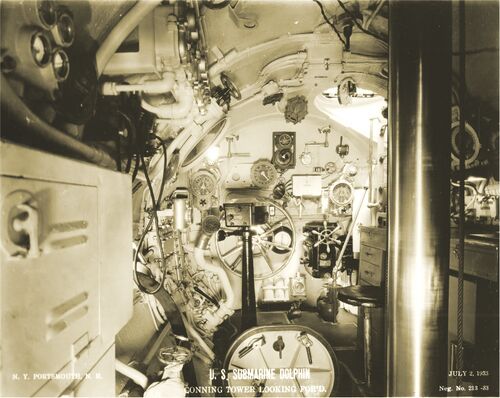
In the center bottom is the access hatch from the control room. Directly above that on the forward bulkhead is the helm.
Between the hatch and the helm there appears to be a pedestal, painted black, with a square top on it. Its function is not known for sure. It is suspected to have been placed there for temporary storage during the upkeep. It was perhaps moved from the deck or bridge. Historian Jim Christley has theorized that this could be an early version of a Sperry Mark I Target Bearing Transmitter (TBT) that was mounted on the bridge. A TBT is used to aim torpedoes while the boat is surfaced. It is used in conjunction with a pair of 7x50 binoculars.
US Navy Photo Contributed by Roger Torgeson
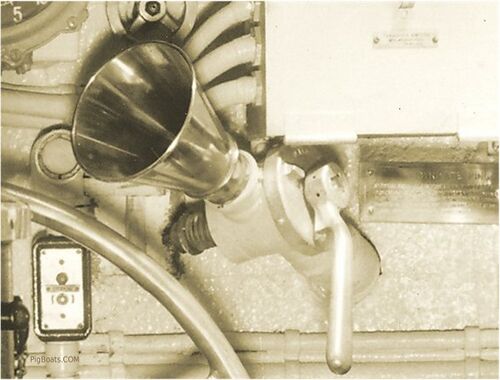
US Navy Photo Contributed by Roger Torgeson
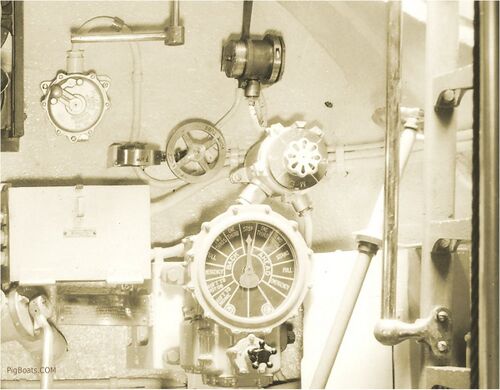
US Navy Photo Contributed by Roger Torgeson

US Navy Photo Contributed by Roger Torgeson
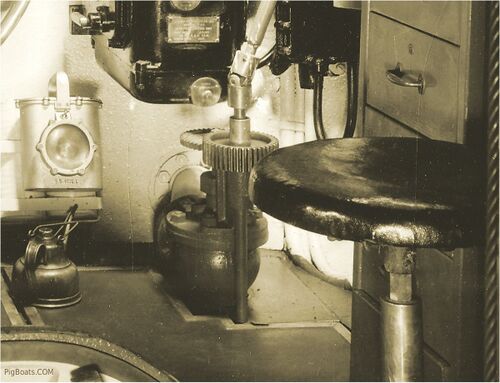
US Navy Photo Contributed by Roger Torgeson
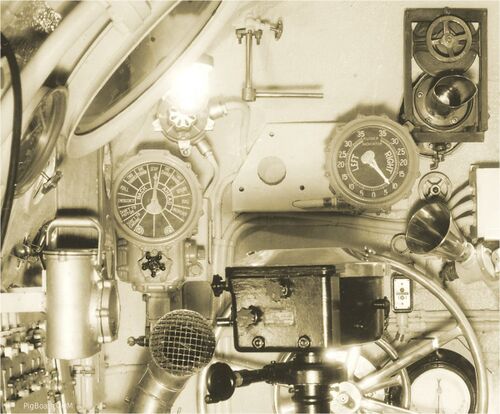
The close up provides a look of the top of the mystery object sitting in the conning tower. It appears to have a polished brass cover on the top of it. Suggestions as to its purpose are welcome.
In the upper right corner there looks to be a device for looking at something outside the conning tower. Most likely this is for viewing an image of the graduated ring of the magnetic compass. This is how the helmsman would know what course he was steering. The compass itself would be mounted up on the bridge. The fairing to block light appears to unbolt and the cover, above, to slide down on rails on either side and lock down over the eyepiece. There is also a petcock drain on the bottom of the device.
US Navy Photo Contributed by Roger Torgeson
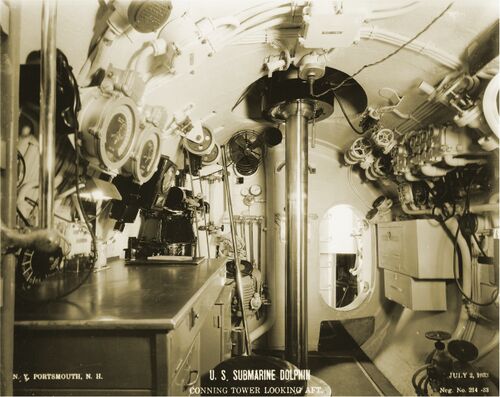
On the far left is a portion of the hand rail for the bridge access ladder and to the right of that are the Port and Starboard shaft RPM dials. Below them is the chart table with a desk lamp. To the right of these are the pulleys and cables for raising and lowering the #1 periscope. The motor for this can be seen at the foot of the ladder to the conning tower in the control room.
The right side of the image shows at the top are the conning tower blow, vent and drain valves. Next to them are the torpedo firing buttons. This area would be rearranged later in the 1930's when a Torpedo Data Computer (TDC) would be added.
To the right of the periscope is the rear deck access door. Dolphin was the first submarine to have this feature. It allowed crew to access the deck through the conning tower. Once through the door you would be in a void space inside the fairwater. There was a cutout in the side of the fairwater allowing access to the main deck.
US Navy Photo Contributed by Roger Torgeson
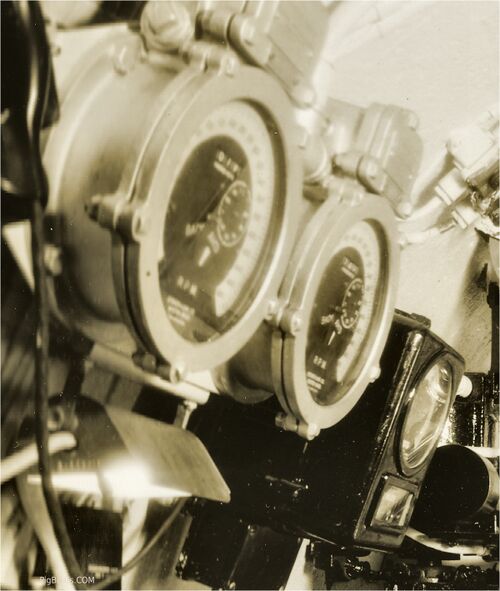
US Navy Photo Contributed by Roger Torgeson
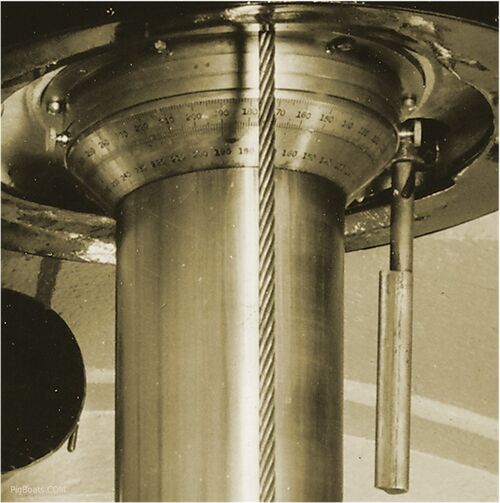
US Navy Photo Contributed by Roger Torgeson
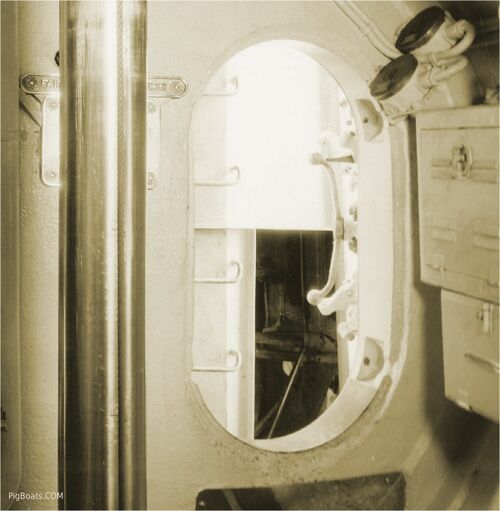
Behind the periscope is the ships name plate with what may have been the ships motto. The first word looks to have been "FAI?" (faith?) but this is not certain. Followed by "ESS". Maybe "Faithfulness and Readiness"?, "Faithfulness and Preparedness"? If anyone finds out, please let us know. Below is the larger plate with the first and last letters of what must have been "US(blocked by periscope)N" "USS DOLPHIN" and it probably had the "SS 169" under that followed by the builder's yard and dates.
US Navy Photo Contributed by Roger Torgeson

To the right of the valves is the torpedo firing panel. The Dolphin had four torpedo tubes forward and two aft. These two boxes with buttons on them are firing buttons. When the order was given to fire a torpedo a command was given such as ,"Fire One", and the button was pushed. at the same time the command was broadcast to the torpedo room and a firing actuator was pushed for that tube. This was a backup in case there was a malfunction in electronic communication.
Switches below the firing buttons turn the buttons on or off to prevent accidental.
US Navy Photo Contributed by Roger Torgeson
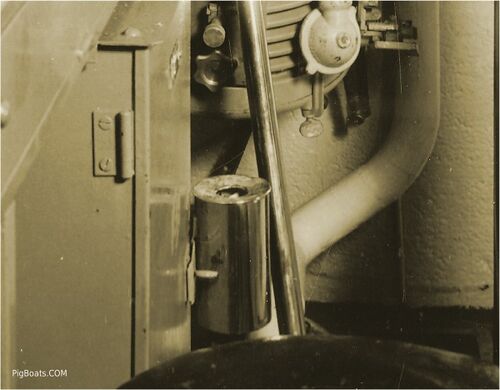
Butt kits were mounted throughout the boat and even near bunks and at the tables in the crew's mess. In those days smoking was commonplace and accepted, and not to smoke was rare though not unheard of.
US Navy Photo Contributed by Roger Torgeson
Page created by:
Ric Hedman & David Johnston
1999 - 2023 - PigBoats.COM©
Mountlake Terrace, WA, Norfolk, VA
webmaster at pigboats dot com
